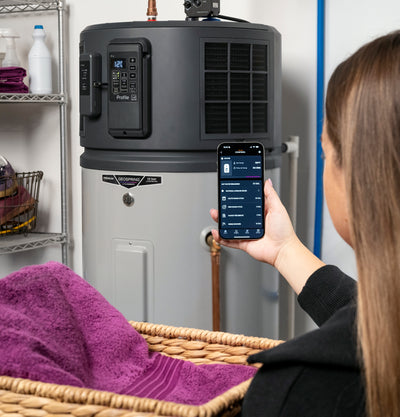Ductless mini-split systems have become increasingly popular for their energy efficiency and versatility in both homes and businesses. As one of the top-selling products on AC Units for Less, we’ve previously discussed the numerous benefits of mini-splits. However, proper installation, particularly the electrical aspects, is crucial for these systems to function safely and effectively.
This post will focus on the electrical requirements for installing a mini-split system, answering common questions related to wiring, breaker sizes, and more. While the installation of a mini-split requires expertise, this guide will provide insights for both homeowners and professionals looking to understand the specifics of mini-split electrical setup.
Important Note: This guide covers electrical specifications only. It does not include instructions for installing line sets or handling refrigerant. Always consult the installation manual for your specific mini-split model, as requirements may vary.
Mini Split Electrical Requirements
Voltage
Most mini-split systems require 208/240V to operate, especially units with capacities greater than 12,000 BTUs. However, smaller units may only need 110V, which is typical for single-zone systems. Be sure to check the voltage requirement for your specific unit to ensure safe installation.
Dedicated Circuits
All mini-split systems must be connected to a dedicated circuit. This prevents overloading the system and avoids frequent tripping of the breaker. The National Electrical Code mandates that major appliances like mini-splits should have their own circuit, which means the unit should have a dedicated breaker in the electrical panel. This ensures the system receives the appropriate amount of power without interference from other appliances.
Disconnect Switch
Installing a disconnect switch near the outdoor unit is required by code in most areas. This switch allows the power to the unit to be cut off during maintenance or in case of an emergency. Disconnect switches are housed in weatherproof enclosures and should be installed next to the mini-split outdoor unit.
Wiring Considerations for Mini-Split Systems
How Many Wires Are Needed for a Mini Split?
There are typically two sets of wires required:
- Circuit Breaker to Disconnect Switch: These wires supply power from the main electrical panel to the disconnect switch located near the outdoor unit.
- Outdoor Unit to Indoor Unit: This wire connects the outdoor compressor unit to the indoor evaporator unit, carrying both power and control signals.
What Wire Size Do I Need From the Circuit Breaker to the Disconnect?
Wire size depends on the power draw of the mini-split and the distance between the breaker and the unit. A commonly used wire size is 10/2 or 10/3, but you should verify based on your unit’s specific electrical requirements. Consult your manual or an electrician to determine the correct gauge.
What Wire Size Do I Need to Connect the Outdoor and Indoor Units?
Typically, a 14/4 stranded conductor cable is used to connect the outdoor and indoor units. This includes two 14-gauge conductor wires for power, one communication wire, and one ground wire. Using the correct wire ensures safe operation and effective communication between the units.
10/2 or 10/3 Wire for Mini Split Systems?
The decision between 10/2 and 10/3 wire depends on the number of connections your system requires.
- 10/2 wire: Contains two conductors and a ground wire, suitable for systems that only need two hot/lead wires.
- 10/3 wire: Contains three conductors and a ground wire, used when a third connector is required (often for larger systems or different power configurations).
Mini Split Breaker Sizes by BTU Rating
-
12,000 BTU Mini Split Breaker Size:
Typically requires a 15-amp breaker for a 110-120V circuit. -
18,000 BTU Mini Split Breaker Size:
Usually needs a 20-amp breaker on a 220-240V circuit. -
24,000 BTU Mini Split Breaker Size:
Requires a 25-30 amp breaker for a 220-240V circuit to handle the higher power draw.
Mini Split Communication Wire Voltage
Mini-split systems use low voltage communication wires, typically around 24-30 volts, to transmit signals between the indoor and outdoor units. This communication ensures both units operate in sync, maintaining optimal efficiency.
Mitsubishi Mini Split Power Requirements
Mitsubishi mini-split systems typically require either 110-120V or 220-240V, depending on the model. Smaller single-zone systems may run on a 15-amp, 110V circuit, while larger multi-zone systems generally require a 20-30 amp breaker on a 240V circuit.
Conclusion
Proper wiring and understanding the electrical requirements are crucial for installing a mini-split system safely. From choosing the right breaker size to determining whether you need 10/2 or 10/3 wire, following these guidelines will ensure that your system runs efficiently and meets all electrical codes. For professional results, always consult an electrician and refer to your mini-split’s installation manual.
At AC Units for Less, we provide all the tools and accessories you need to install a mini-split, including wiring kits, disconnect switches, and more. Explore our range of products to find the perfect solution for your mini-split installation!
Why-choose-a-daikin-ductless-mini-split-system-for-your-home-or-business




